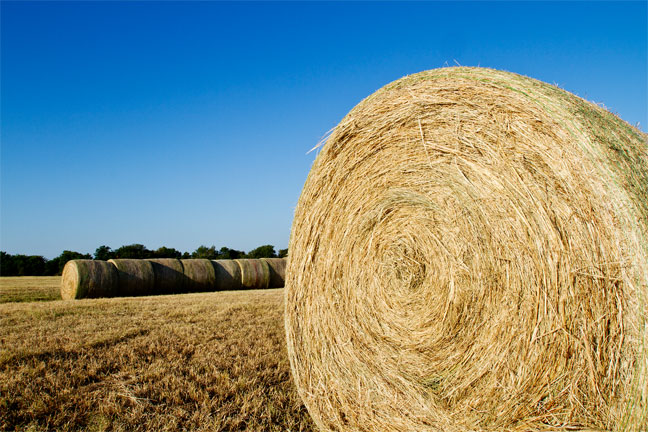
Agricultural News
Noble Research Institute Offers Tips to Consider When Analyzing the Quality of Your Hay After Rainfall
Fri, 05 Jul 2019 11:24:57 CDT
 The following article entitled, Hay Quality After Rainfall, was published by Robert Wells, Ph.D., Livestock Consultant at the Noble Research Institute.
The following article entitled, Hay Quality After Rainfall, was published by Robert Wells, Ph.D., Livestock Consultant at the Noble Research Institute.
The spring weather pattern this year has allowed for an excellent growing season for cool-season annuals such as ryegrass. This weather pattern has also made it very difficult to swath and bale hay without it being rained on. How has that affected hay production? There have been two main problems with making hay this spring and summer. The first is a loss of quantity and quality of rained-on hay, and the other is the potential to bale it wetter than usual (above 16-20 percent moisture). Both of these things negatively affect the feeding value of the hay.
QUALITY AND QUANTITY
Research at Iowa State University found that fresh-cut hay with less than 1 inch of rain took a few more hours to dry, but didn't suffer much, if any, quality or quantity loss. A light rain on nearly dry hay, though, caused significant losses. In addition, they found that for every inch of rain, dry matter yield and digestibility dropped at least 5 percent and 10 percent, respectively. Most nutrient losses occur from leaching and shattering of higher quality plant parts as it is raked or tedded multiple times trying to get it dry enough to bale. The longer it stays wet, the more energy value is lost and, to a lesser extent, the more protein content decreases.
MOISTURE CONTENT
With the pattern of frequent rain events we have been experiencing, there is no doubt that some hay has been baled with more than the recommended 20 percent moisture. Hay baled at normal moisture levels will usually heat to 120-130 degrees F. Some mold and mustiness often occur, but usually not enough to affect quality or consumption. If it is baled above 20 percent moisture, though, the bales can heat up to 190-200 degrees F, the point at which spontaneous combustion can occur. Between these two ranges, excessive mold and fungi can grow, and feeding value can decline significantly. If you suspect your hay was baled too wet, try to delay stacking for several weeks and monitor the internal temperature until it come down. Specialized thermometers for this purpose, 2 to 3 feet in length, are available commercially or can be homemade.
Rained-on hay does not necessarily mean ruined hay. Regardless, take a good composite sample of each cutting and have it analyzed - this is the only way to determine its nutritional value. Then, you can develop a feeding strategy for the hay-feeding season. You should do the same before purchasing hay. If you have any questions, contact a livestock consultant here at the Noble Research Institute.
Source - Noble Research Institute
WebReadyTM Powered by WireReady® NSI
Top Agricultural News
More Headlines...





